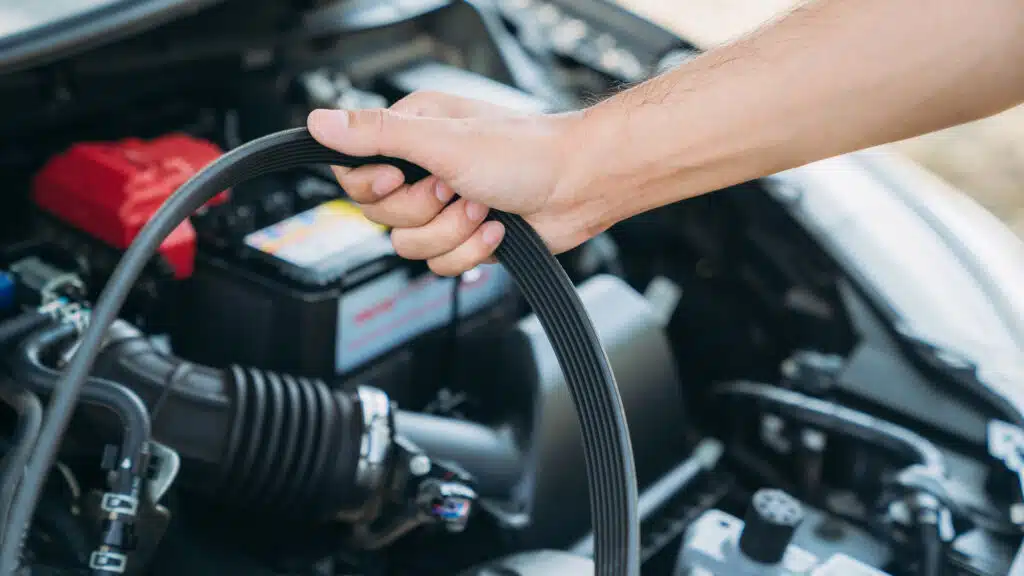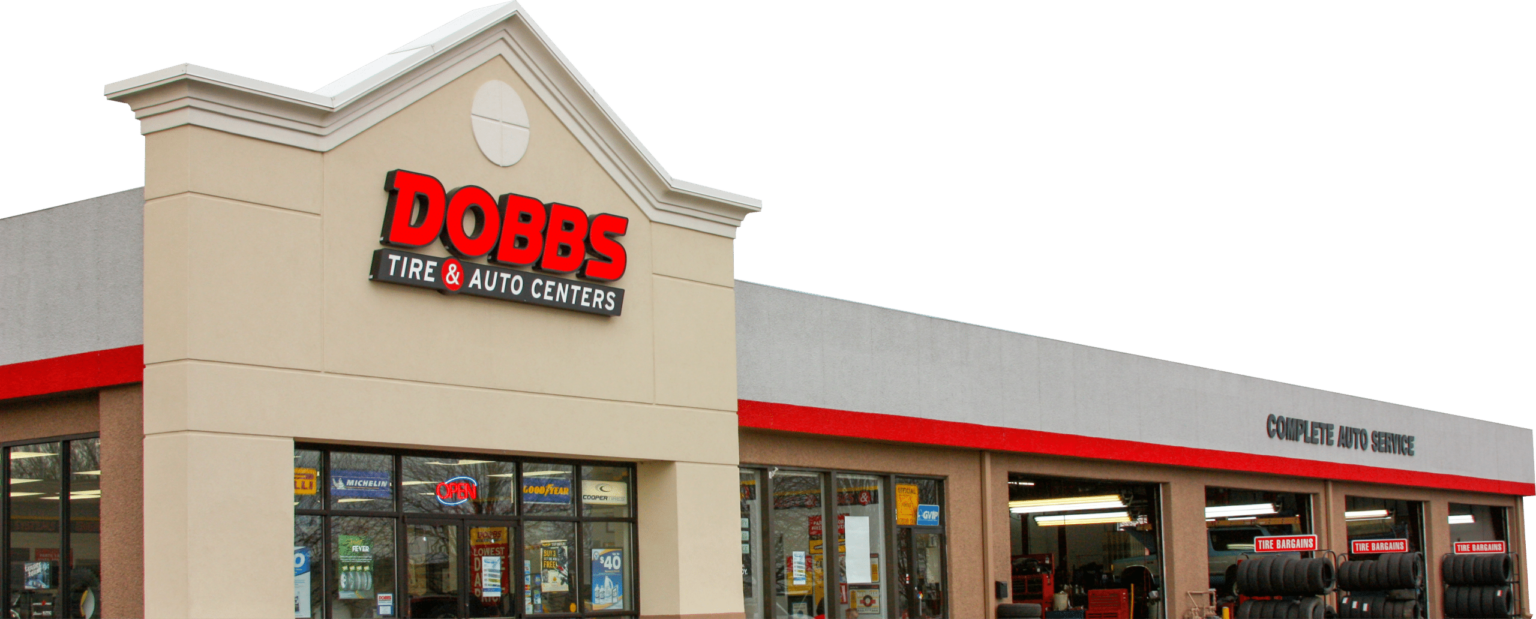Unveiling the Differences Between a Serpentine Belt and a Fan Belt

Are you puzzled by the terminology surrounding automotive belts? Dive into the world of engine mechanisms as we unveil the contrasts between two fundamental components: the serpentine belt and the fan belt. These belts may seem similar at first glance, but their roles and functions under the hood couldn’t be more distinct.
While both belts are integral to the proper functioning of your vehicle, understanding their unique purposes can make a significant difference when it comes to maintenance and performance. Join us on a journey through the intricacies of automotive engineering, where we decode the mysteries behind these essential engine parts.
At Dobbs Tire & Auto Centers, our ASE-Certified Technicians are experts in diagnosing and servicing both serpentine and fan belts, ensuring your vehicle stays in peak condition. With over 40 locations across the region, we provide professional, reliable service backed by years of expertise in automotive care.
Understanding the Serpentine Belt
The serpentine belt is a crucial component in modern vehicles, playing a key role in the engine’s operation. This long, continuous belt winds around several pulleys, connecting various engine accessories such as the alternator, power steering pump, water pump, and air conditioning compressor. Its design allows it to drive multiple components simultaneously, making it an efficient solution for power distribution in the engine bay. Unlike older vehicles that often use multiple belts for different accessories, the serpentine belt simplifies the system by combining these functions into a single belt.
One of the defining features of the serpentine belt is its ribbed design, which helps maintain grip on the pulleys. The ribs provide effective traction, preventing slippage and ensuring that the belt operates smoothly under various conditions. This design also allows for flexibility, enabling the belt to handle the different forces exerted by the engine components it drives. As a result, serpentine belts are generally more reliable and require less frequent replacement than traditional multi-belt systems.
At Dobbs Tire & Auto Centers, we use top-quality replacement parts and advanced diagnostic tools to check your serpentine belt for wear and tear. If you notice squealing noises or loss of power steering, it may be time for a replacement—trust our team to get the job done right.
Exploring the Fan Belt
The fan belt, often referred to as a V-belt, is a more traditional component that has been largely phased out in favor of the serpentine belt in many newer vehicles. However, understanding its role is still critical, especially when dealing with older models. The fan belt’s primary function is to drive the engine’s cooling fan, which is essential for regulating the engine temperature. By turning the fan, it helps dissipate heat generated during combustion, ensuring that the engine operates within its optimal temperature range.
Fan belts are typically shorter and have a V-shaped cross-section, which allows them to fit snugly into the pulleys they drive. This design provides a secure grip, minimizing the chances of slippage and ensuring consistent operation. In some vehicles, the fan belt may also drive additional components, such as the alternator or water pump, but this is less common than with serpentine belts.
If you drive a classic or older vehicle that relies on a fan belt, Dobbs Tire & Auto Centers is your trusted partner for routine maintenance and replacement. Our skilled technicians will inspect your fan belt for signs of wear and ensure optimal performance for your vehicle.
Importance of Regular Maintenance
Regular maintenance of automotive belts is crucial for ensuring the longevity and efficiency of vehicle performance. Both serpentine belts and fan belts experience wear and tear over time due to constant exposure to heat, friction, and various environmental factors. Regular inspections can help identify signs of wear, such as cracks, fraying, or glazing, which can indicate that a belt is nearing the end of its service life.
For the serpentine belt, maintenance involves checking tension and alignment, as improper tension can lead to slippage or premature wear. Many modern vehicles come equipped with automatic tensioners that help maintain proper belt tension, but these still require periodic inspection. A failing serpentine belt can lead to serious issues, including battery failure, overheating, and power steering loss.
Fan belts also require regular checks, especially in older vehicles where they are more commonly used. A loose or worn fan belt can lead to poor cooling performance, putting the engine at risk of overheating.
At Dobbs Tire & Auto Centers, we provide comprehensive belt inspections as part of our routine vehicle check-ups. Our experienced technicians ensure that your belts are in optimal condition, preventing costly breakdowns and extending the life of your vehicle.
Signs of Serpentine Belt and Fan Belt Issues
Identifying signs of issues with serpentine and fan belts is crucial for maintaining vehicle performance and preventing breakdowns. Common warning signs include:
- Squealing or chirping noises when the engine is running
- Power steering difficulties or a weak battery charge
- Overheating engine, which may indicate a failing fan belt
- Visible cracks, fraying, or excessive wear on the belt
If you experience any of these symptoms, don’t wait for a breakdown. Visit Dobbs Tire & Auto Centers, where our ASE-Certified Technicians will assess and replace your belt as needed, ensuring safe and reliable performance.
Replacing a Serpentine Belt vs. a Fan Belt
When it comes time to replace a serpentine belt or a fan belt, the process and considerations can differ significantly. Replacing a serpentine belt typically involves loosening the tensioner, removing the old belt, and installing a new one following the correct routing. Given its complexity, professional service is often recommended to avoid misalignment issues.
In contrast, replacing a fan belt is generally a more straightforward process, given its simpler design and fewer components involved. However, proper alignment and tensioning are crucial for effective operation.
At Dobbs Tire & Auto Centers, we provide professional belt replacement services with high-quality parts designed to last. Whether your vehicle needs a new serpentine belt or a fan belt replacement, our team will get you back on the road quickly and safely.
Trust Dobbs Tire & Auto Centers for Your Belt Maintenance
Understanding the differences between serpentine belts and fan belts is essential for any vehicle owner. While both components play critical roles in engine performance, their functions, designs, and maintenance requirements differ significantly. The serpentine belt’s ability to drive multiple accessories streamlines engine operation, while the fan belt’s dedicated role is vital for effective cooling in older models.
At Dobbs Tire & Auto Centers, we take the guesswork out of vehicle maintenance. With our ASE-Certified Technicians, state-of-the-art equipment, and commitment to customer satisfaction, we ensure your vehicle receives the best care possible. Whether you need a belt inspection, replacement, or general auto repair, schedule an appointment today and experience the Dobbs difference!
